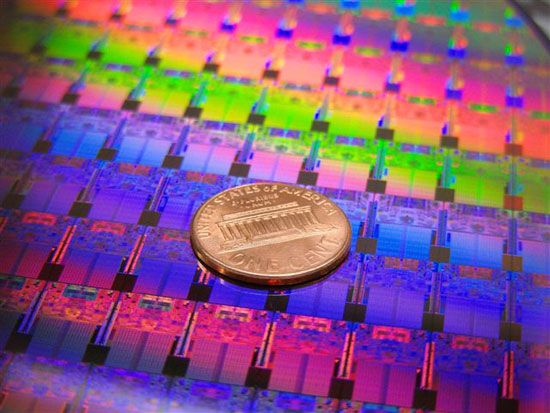Intel Core 2 Extreme QX9650 - Penryn Ticks Ahead
by Anand Lal Shimpi on October 29, 2007 12:13 AM EST- Posted in
- CPUs
Final Words
It's almost a bit disheartening to see Penryn launch at only 3.0GHz, as we know the architecture is capable of so much more. Unfortunately, what it looks like we're seeing here today is an artificial slowing of Intel's roadmap in response to the competition. While the tick-tock model is still very much in play and Nehalem is on track for a late '08 release, we're getting a 1333MHz FSB 3.0GHz QX9650 today instead of a 1600MHz FSB 3.2GHz Q9770 because there's no competitive reason for anything more. AMD's Phenom still isn't out and all indications are that we won't see 3GHz from AMD until sometime next year, meaning that Intel definitely doesn't have any real incentive to push the performance envelope this year.
Penryn really offers a wide range of performance; at worst it's no faster than its predecessor, but at best we're looking at low double digit performance gains. The biggest improvements seem to come in the encoding, 3D rendering and image manipulation applications, which makes sense when you look at the nature of the architectural improvements in Penryn.
The tremendous reduction in power consumption is very exciting and arguably one of the more desirable features of Penryn. The initial SSE4 results do look promising, but as we've often seen with new instructions, it's anyone's guess as to when we'll see widespread adoption of them from developers (and how much they will truly help in everyday use). The fact that we're able to bring you real world DivX performance results today though is promising.
Given that we're expecting a seamless price transition, it's tough to really find fault with Penryn. While the performance bumps can vary from minor to major, the cost should be nothing to the end user, in which case we can't complain. It's not the revolutionary step that Conroe was, but Penryn is merely making everything a little better all while driving power consumption down. So long as Intel keeps its prices the same, we're happy.

So what are the final words on it? As an evolution of Conroe, Penryn gets our vote. We just want it at lower price points, please.










16 Comments
View All Comments
Canadian87 - Monday, October 29, 2007 - link
I'd like to point out that someone must have been tired when writing this. The graphs here on page 4 say "QX6950" VS "QX6850", simple reversal of the numbers, but I'd like to correct it for those that might be confused, took me a moment to figure out which was which myself the "QX6950" is ment to be the "QX9650", and obviously the "QX6850" is the correct naming.GL HF.
GlassHouse69 - Monday, October 29, 2007 - link
ew.intel again ftw. blech. They made a great chip. power usage is fantastic. One could get even lower total wattages (by far) if they concentrated on doing so. a quad core that can be cooled near silently. neat :)
sprockkets - Monday, October 29, 2007 - link
Just a question, what was the difference from Core to Core 2? All I could ever fine was cache size was increased.Now that I'm thinking about it, why not the name Quadro? Oh, nVidia ownz it.
defter - Monday, October 29, 2007 - link
Core Duo (Yonah) was based on Pentium M.Core2 (Conroe) is a new architecture.
sprockkets - Monday, October 29, 2007 - link
actually i found a comparison page about it, and core 2 isn't that much different from core. Yes, it updated a lot and gave improved performance. No, it is not a completely new architecture from PM, but you can say a big difference from the P4.http://www.anandtech.com/showdoc.aspx?i=2808&p...">http://www.anandtech.com/showdoc.aspx?i=2808&p...
sprockkets - Monday, October 29, 2007 - link
On page 9 I believe you are grabbing some old benchmarks, old in the sense of your previous articles. I believe I pointed this out to you as a mistake, and now it is here in the bar graph. Again, how is it that the 2.33ghz C2D outperforms the 3ghz one?